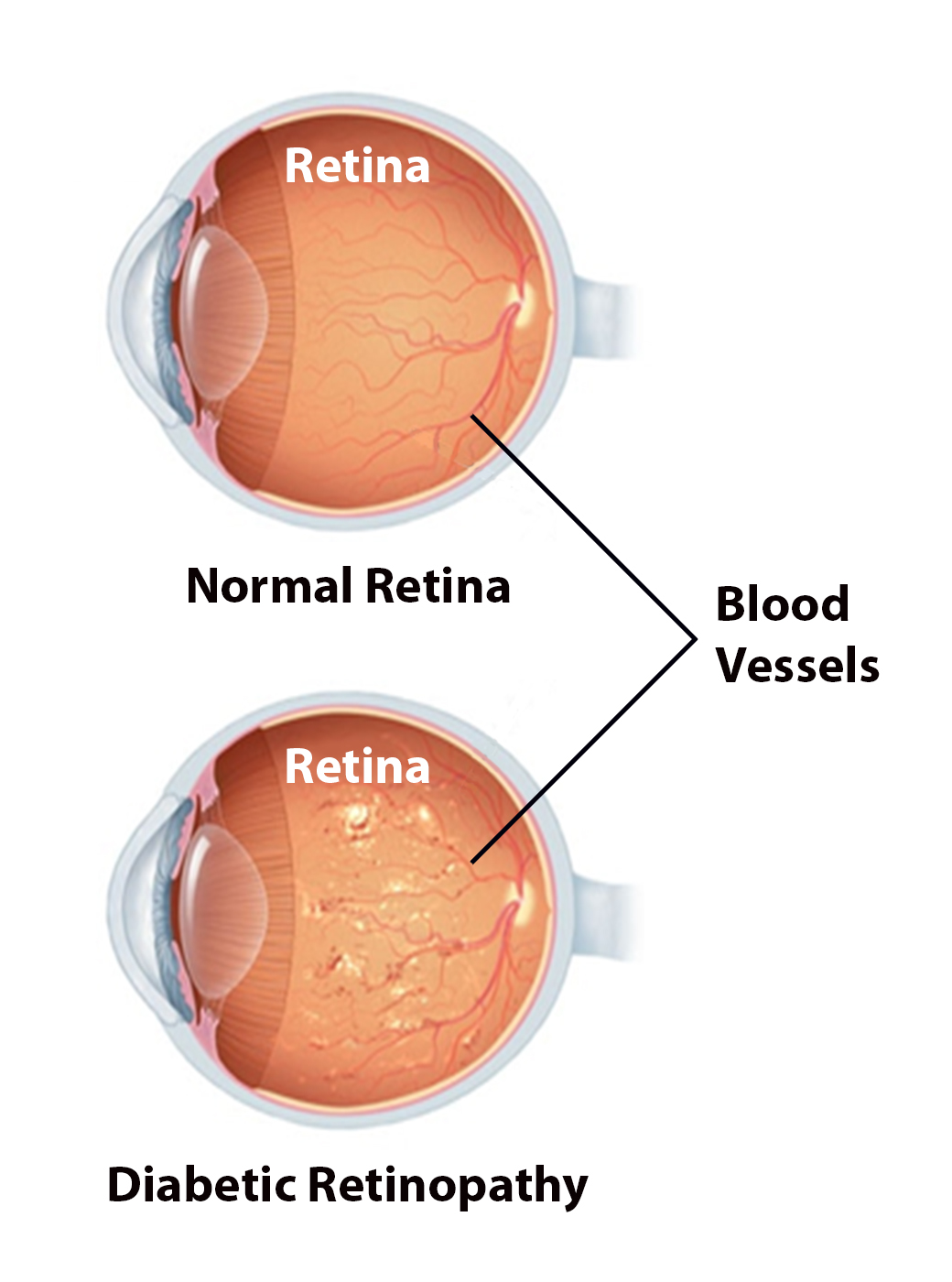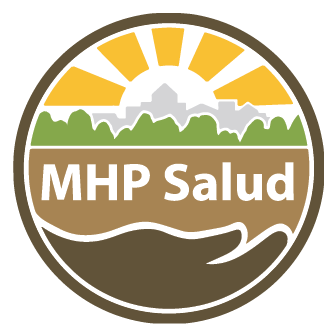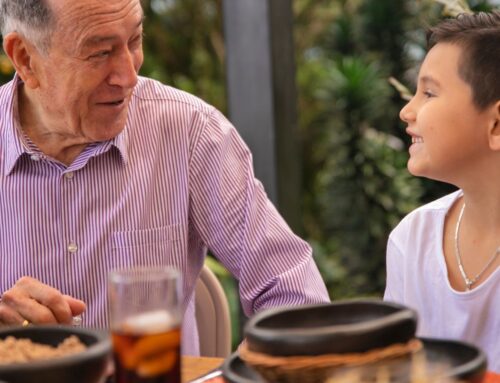Diabetes Control and Management: Eye Health
Published January 2022 | Back to all news and updates.
MSAW and Latino Communities Managing Diabetes
Diabetes is a common yet complicated chronic health condition. Diabetes amongst Migrant Seasonal Farmworkers (MSAWs) can be more challenging than most groups managing this health condition. MSAWs are, for the most part, classified as of Hispanic/Latino descent, which places them at even greater rates of complications related to diabetes. According to the Centers for Disease Control and Prevention (CDC), US adults have a 40% chance of developing type 2 diabetes at a young age, but, if you are Hispanic/Latino, the chances of developing diabetes are more than 50%.1 Latinos overall may experience many diabetes-related complications, such as amputations, renal stage disease, vision loss, and hospital admittance.
Issues that may cause greater complications for MSAWs include:
- Cultural Issues such as language, literacy, medical knowledge, health care practices, beliefs, and dietary practices.
- Poverty with unreliable transportation, lack of insurance and prescription coverage, inability to buy services and supplies or to modify diets, and substandard housing that may lack refrigeration, privacy, or adequate bath facilities.
- Migration causing discontinuity of care and unfamiliar health care systems, as well as special needs related to traveling long distances.
- Political considerations associated with immigration status of the patient and family, work environments that typically do not include benefits, supports, and protections, such as disability coverage or workers compensation.
- Work environments that complicate the needs associated with foot care, glucose monitoring, hydration, rest, and self-medication.2
Diabetes Eye Care
Diabetes patients require taking extra steps when managing their diabetes to prevent complications related to the disease (i.e., amputations, renal failure, foot care, and vision loss). MSAWs are no exception to this and require extra precautions in their workplaces to prevent injury which can result in poor healing. Compared to other industries, MSAWs are more likely to suffer eye injuries and illnesses due to environmental exposures and harsh working conditions including ongoing exposure to sunlight, working outdoors in extreme ultraviolet lights, pollen exposure, pesticides and other chemicals that may irritate or cause injury to the eyes.3
“Personal protective equipment (PPE) is important for agricultural producers to reduce their risk of injury or death. Most eye injuries can be prevented by wearing the appropriate PPE such as basic safety glasses or goggles. Injuries to the eye can be expensive, painful, and may cause partial or total blindness. Proper eye protection is the best strategy in preventing eye injuries because most eye injuries are a result of flying particles. The eye has its own built-in protection from the surrounding bone structure, eyelashes, tearing, and blinking; but they are no match for particles entering the eye at a high rate of speed. Eye protection should be worn when completing the following types of jobs: feed grinding, handling chemicals, haying, welding, repairing equipment, and any task completed in a dusty environment.”4
Besides workplace injuries, MSAWs should be concerned about how diabetes affects their eyes. Diabetic retinopathy is a complication of diabetes that affects the eyes by damaging the blood vessels in the tissue at the retina, or the back of the eye. Uncontrolled blood sugar is a risk factor for this condition. Symptoms can include floaters, blurriness, dark areas of vision, and difficulty perceiving colors. In serious cases, blindness can occur. Diabetic retinopathy can be treated by managing sugar levels and more serious cases may require laser treatment or surgery. Anyone with diabetes can develop Diabetic retinopathy. The following are risk factors related to the development of this eye condition:
- Having diabetes for a long time
- Poor control of your blood sugar levels
- High blood pressure
- High cholesterol
- Pregnancy
- Tobacco use
- Being African American, Hispanic, or Native American5
Complications from diabetic retinopathy can lead to serious vision problems such as vitreous hemorrhage, retinal detachment, glaucoma and blindness.
- Vitreous hemorrhage.The new blood vessels may bleed into the clear, jellylike substance that fills the center of your eye. If the amount of bleeding is small, you might see only a few dark spots (floaters). In more-severe cases, blood can fill the vitreous cavity and completely block your vision. Vitreous hemorrhage by itself usually doesn’t cause permanent vision loss. The blood often clears from the eye within a few weeks or months. Unless your retina is damaged, your vision will likely return to its previous clarity.
- Retinal detachment.The abnormal blood vessels associated with diabetic retinopathy stimulate the growth of scar tissue, which can pull the retina away from the back of the eye. This can cause spots floating in your vision, flashes of light, or severe vision loss.
- New blood vessels can grow in the front part of your eye (iris) and interfere with the normal flow of fluid out of the eye, causing pressure in the eye to build. This pressure can damage the nerve that carries images from your eye to your brain (optic nerve).
- Diabetic retinopathy, macular edema, glaucoma, or a combination of these conditions can lead to complete vision loss, especially if the conditions are poorly managed. 5
Managing sugar levels can be a daily challenge. In general, diabetes complications can be prevented by managing sugar levels, healthy food intake, taking medication as prescribed, and exercising. Diabetic retinopathy can be prevented and detected early with regular eye exams which are recommended once a year. Besides sugar levels, it is suggested to maintain a stable blood pressure and cholesterol levels as well.
Schedule appointments with your eye doctor at least once a year so they can spot any problem early and treat it. During your exam, your eye doctor will use special drops to widen (dilate) your pupils and check the blood vessels in your eyes for early signs of damage.
Keep your blood sugar under control. If you do that, you can slow any damage to the tiny blood vessels in your eyes. Several times a year, you should have an A1c blood test. It shows your blood sugar levels over the past 2 or 3 months. Your result should be around 7% or less.
Keep high blood pressure in check. It can lead to eye disease, too. If you have high blood pressure and diabetes, you need to be even more careful about your health. Ask your doctor to check your blood pressure at every visit. For most people with diabetes, it should be less than 130/80.
Check your cholesterol levels. All it takes is a blood test to find out how much “bad” LDL and “good” HDL cholesterol you have. Too much LDL is linked to blood vessel damage.
Eat for wellness. Go for fruits, vegetables, whole grains, and lean protein. If that’s a big change for you, you can get ideas and encouragement from a nutritionist. You can also ask your doctor’s advice about what times you should eat throughout the day and how much is OK if you take insulin.
If you smoke, quit. Smoking causes problems with your blood vessels, which makes you more likely to end up with eye trouble. It is not easy to stop smoking, so do not hesitate to ask your doctor for help. There are also support groups and programs to help you stop smoking.
Move more. Exercise can have a big influence on blood sugar. If you use insulin or medication to lower your blood sugar, ask your doctor when you should check your levels before and during your workouts. Also ask what type of workout you should do. 6
CHWs and their work in addressing diabetes
Community Health Workers (CHWs) are trusted members of their community who empower their peers through education and connections to health and social resources. CHWs can improve the health of their communities by linking individuals to health and social services and education on health and disease management and by mobilizing their communities to create positive change. 7 CHWs can be identified by many titles (i.e., community health advisors, lay health advocates, Promotores(as) de Salud, outreach educators, community health representatives, peer health promoters, and peer health educators, etc.); regardless of the title, the various positions all work to serve their community. CHWs usually share ethnicity, language, socioeconomic status, and life experiences with the community members they bring services to. CHWs typically reside in the community they serve and have the unique ability to bring information where it is needed most. They can reach community residents where they live, eat, play, work, and worship.8
While CHWs’ primary role is often linking vulnerable populations to the health system, additional roles can include cultural mediation, culturally-appropriate education, care coordination, case management and systems navigation, coaching and social support, advocacy, capacity building, and outreach. Due to their close understanding of and trust from the community, CHWs have a unique ability to build strong relationships and effectively address challenges individuals face when trying to manage chronic conditions. Through their roles, CHWs offer support to patients with diabetes and/or at risk of developing diabetes in a unique, culturally appropriate manner.7
MHP Salud’s CHW-Led Programs
MHP Salud’s diabetes programs provide accessible support and education to vulnerable populations so they can live healthier lives. These community-based educational classes are led by a trained CHW who provides educational instruction on how participants can manage their diabetes and maintain a healthy lifestyle. CHWs can culturally identify with program participants and are well-suited to provide appropriate recommendations that participants will be receptive to, as well as be able to implement based on their available resources and food options. CHWs also conduct home visits and speak one-on-one with participants on the importance of proper nutrition, physical exercise, and disease management. Sometimes, participants may need services that go beyond the scope of the CHW. Because of this, they often partner with local clinics and providers assist participants to access these services. Overall, CHW interventions have demonstrated success in improving health outcomes among individuals diagnosed with diabetes and support at-risk individuals to prevent the development of the condition.7
MHP Salud’s Juntos Podemos (Together We Can!) is a CHW-led program through the Supplemental Nutrition Assistance Program (SNAP-Ed) to help participants make improvements in diet and exercise and promoting healthy lifestyles among families in South Texas. Through culturally and linguistically appropriate education, the program focuses on healthy nutrition, active lifestyles, and reduced screen time. The program targets Latino parents and caregivers of children 2 to 13 years of age, who qualify to receive Supplemental Nutrition Assistance Program (SNAP) benefits or other Federal Assistance programs. Through outreach in the community, CHWs can identify and recruit qualifying participants, inform them about the benefits of healthy nutrition and active lifestyles, and then invite them to participate in the program’s group health education classes. These ninety-minute sessions are led by CHWs once a week for four weeks at accessible locations within the community. In each session, participants receive a healthy snack and perform 15 minutes of physical activity as well as receive education on different topics and support to adopt a healthier lifestyle for themselves and their families.9
CHW Testimonial
Lorena De Leon has worked as a CHW for many years helping the community to learn more about diabetes prevention and management. Lorena currently works under the Juntos Podemos program where she serves the community in rural areas. Lorena says her program has been welcomed and accepted by the community as it involves the whole family. She mentions that her participants learn about food portions and salt and sugar intake, and they learn how what they eat impacts their bodies and their health.
“We never realize what we’re doing wrong because we’re brought up to eat big meals and carbs. We never think that illness complications will happen to us (i.e., amputations, vision loss, loss of teeth, etc.) In the Juntos Podemos group sessions, we show visuals of the amounts of sugar in each beverage, an eye-opener to participants. We encourage the participants to make exercise fun and to include their children either by watching internet videos or playing outside. We learn from each other, share healthier option recipes, learn how to read food labels, and discuss how to choose healthier options when buying fast food”.
Lorena adds that the community likes the group sessions so much, they ask about attending the classes again or other programs like it. Lorena says her participants start off by making small changes that lead to notable health improvements among participants in her group sessions, which is one of the greatest satisfactions as her work as a Community Health Worker.
Diabetes Resources
Association of Diabetes Care & Education Specialists
The Association of Diabetes Care and Education Specialist website provides education on prediabetes and diabetes in both English and Spanish that will guide you through your treatment and help to understand your diagnosis. To read more and view the website click here.
Migrant Clinicians Network
The Migrant Clinicians Network has created a Spanish comic titled “Mi salud es mi tesoro: Un guía para vivir bien con diabetes,” or, “My Health is My Treasure: A Guide to Living Well with Diabetes.” This easy-to-read comic follows the story of an agricultural farmworker who experiences a diabetes diagnosis and learns to eat well and exercise to prevent additional illness, all while migrating for work. To view or download a digital copy, click here.
WebMD; Quick and Healthy Meals for People with Diabetes
This article shares quick and healthy meals for people with diabetes including ingredients needed, prep time, and nutrition information. The article also includes the best and worst food choices when choosing vegetables, fruits, proteins, starches, and drinks. To view the full list and recipes, click here.
Lilly Diabetes
Lilly Diabetes website provides downloadable resources for diabetes management. The resources range from exercise, healthy portions, balancing food, carb counting, self-care diaries, and daily meal planning guides. To view and download resources, click here.
American Diabetes Association
Focus on Diabetes is a multi-year initiative by the American Diabetes Association that increases awareness about diabetes and eye health. This initiative includes a risk test which brings awareness to risk factors and prevention. To learn more, click here.
- https://www.cdc.gov/diabetes/library/features/hispanic-diabetes.html
- https://www.migrantclinician.org/issues/diabetes
- https://www.ncbi.nlm.nih.gov/pmc/articles/PMC3071598/
- https://ag-safety.extension.org/eye-protection-for-agricultural-workers/
- https://www.mayoclinic.org/diseases-conditions/diabetic-retinopathy/symptoms-causes/syc-20371611
- https://www.webmd.com/a-to-z-guides/eye-care
- https://mhpsalud.org/our-chw-initiatives/community-health-workers/
- https://www.nhlbi.nih.gov/health/educational/healthdisp/role-of-community-health-workers.htm
- https://mhpsalud.org/programs/our-programs/juntos-podemos/
This publication is supported by the Health Resources and Services Administration (HRSA) of the U.S. Department of Health and Human Services (HHS) as part of an award totaling $678,959.00 with 0 percentage financed with nongovernmental sources. The contents are those of the author(s) and do not necessarily represent the official views of, nor an endorsement, by HRSA, HHS or the U.S. Government. For more information, please visit www.HRSA.gov.
Blog Topics


This brochure, created by MHP Salud and Hebni Nutrition Consultants, Inc., was designed to help Hispanic and Latino Communities build nutritious plates with familiar fresh foods.







